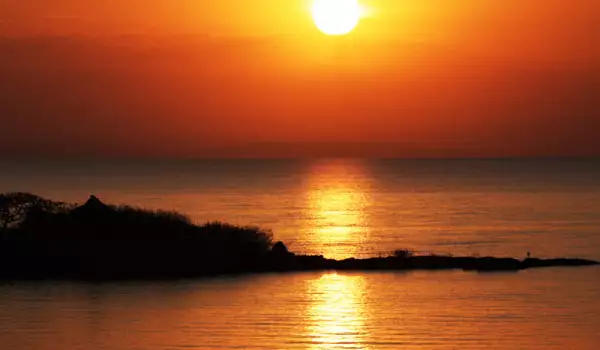Lake Tana

Lake Tana is the largest lake in Ethiopia. It is located in the northwestern part of Ethiopia, North Africa, the so-called Abyssinian plateau. Lake Tana stands lonely and beautiful about 1800 meters above sea level and is surrounded by mountains, tall 3000-4000 meters, known as the Moon, or the Ethiopian mountains.
Here is the highest peak in Ethiopia - Ras Dashan. For centuries, this area is occupied by monasteries, temples and many monks who lead a humble life, lived solely in farming and fishing on Lake Tana.

Lake Tana is long 84 and 66 km wide. It has a tectonic-volcanic origin and covers a total area of about 2156 square kilometers and its maximum depth reaches 72 meters. Numerous monasteries were built not only along the coast it but also on its islands.
Many valuable landmarks and important settlements in Ethiopia are located near Tana, such as the famous for its many castles Gondar, where you can see intriguing fortress Fasil Ghebbi, located only 50 km from Lake Tana. Tana is located north from the beautiful town of Bahir Dar, Ethiopia.
Along with Lake Victoria in Uganda, which started the White Nile, Lake Tana is a starting point of Blue Nile. It is these two lakes that provide the beginning of the most important river in Africa. The water of the lake is drained by the roaring waterfall and rushes into a close picturesque gorge, giving the beginning of the Blue Nile. From there, it flows south and makes a wide turn about 100 km north of Addis to be directed to the northwest and merges with the White Nile at Khartoum, Sudan.
The alluvial planes Dembea, on the north bank of the Tana and Fogera, located on the east side of Fogera show that once the lake was much larger. Bahir Dar, near the south bank of the pool of water’s falling waters form the beautiful Blue Nile Falls Tisisat, whose water table falls from 42 feet.
The local population is primarily engaged in the cultivation of coffee, cereals, oilseeds, and grows cattle. Ethiopians in Lake Tana have crafted a unique method of transportation - papyrus reed boats.
Monasteries and churches in Lake Tana date back 13, 14, 15 and 16 century and represent exceptional value, as recognized by UNESCO. They are a shining example of how Christianity was able to stand during the Middle Ages, with all the local pressure. On a total of 37 islands of the archipelago of Lake Tana are preserved remains of the former and still active churches and monasteries.
They feature unique architecture - oval design, materials and construction equipment. All temples consist of three parts - the sanctuary and internal and external clinic. The outer walls of the sanctuary are usually covered with magnificent frescoes.
Seven of these temples are still active churches - Kebran Gabriel, Ura Kidane Mehret, Narga Selassie, Daga Estifanos, Medhane Alem of Rema , Kota Maryam and Mertola Maryam. Because of the isolation of these islands, temples amidst Lake Tana have been used to store religious relics and works of art from all over the country.















